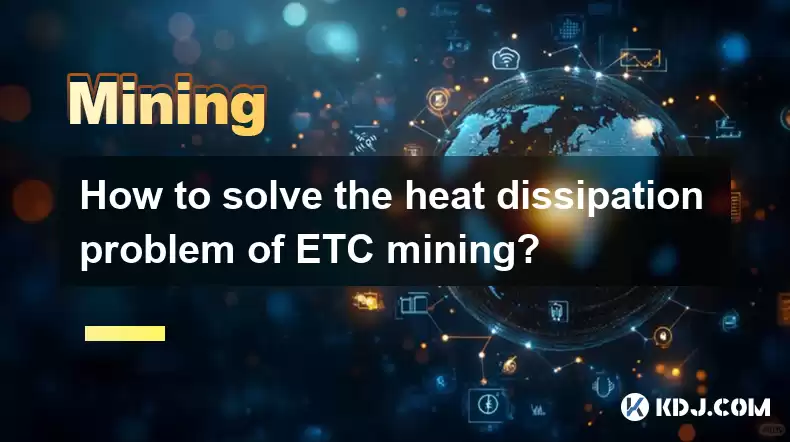-
 Bitcoin
Bitcoin $115100
1.27% -
 Ethereum
Ethereum $3675
2.71% -
 XRP
XRP $2.995
1.45% -
 Tether USDt
Tether USDt $1.000
0.02% -
 BNB
BNB $769.8
2.64% -
 Solana
Solana $168.0
3.25% -
 USDC
USDC $0.9999
-0.01% -
 TRON
TRON $0.3371
1.48% -
 Dogecoin
Dogecoin $0.2051
3.36% -
 Cardano
Cardano $0.7394
2.30% -
 Hyperliquid
Hyperliquid $38.15
0.42% -
 Stellar
Stellar $0.3966
-0.36% -
 Sui
Sui $3.486
2.93% -
 Chainlink
Chainlink $16.72
2.52% -
 Bitcoin Cash
Bitcoin Cash $568.0
4.36% -
 Hedera
Hedera $0.2440
2.59% -
 Ethena USDe
Ethena USDe $1.001
0.04% -
 Avalanche
Avalanche $22.16
2.06% -
 Litecoin
Litecoin $119.1
-0.73% -
 UNUS SED LEO
UNUS SED LEO $8.991
0.04% -
 Toncoin
Toncoin $3.232
-0.39% -
 Shiba Inu
Shiba Inu $0.00001233
2.82% -
 Uniswap
Uniswap $9.717
2.53% -
 Polkadot
Polkadot $3.664
1.85% -
 Dai
Dai $1.000
0.01% -
 Monero
Monero $281.2
-3.89% -
 Bitget Token
Bitget Token $4.350
1.55% -
 Cronos
Cronos $0.1428
5.07% -
 Pepe
Pepe $0.00001050
3.68% -
 Aave
Aave $262.3
3.54%
How to solve the heat dissipation problem of ETC mining?
Effective ETC mining requires proactive heat management. This involves optimizing airflow, using specialized cooling (fans, liquid cooling), preventative maintenance (cleaning, monitoring), and strategically placing mining rigs to avoid heat buildup and maximize hardware lifespan.
Mar 14, 2025 at 12:40 am

Key Points:
- Understanding the heat generation sources in ETC mining.
- Exploring various cooling solutions for ETC miners.
- Optimizing mining rig placement and airflow.
- Utilizing specialized cooling equipment.
- Implementing preventative maintenance to extend hardware lifespan.
How to Solve the Heat Dissipation Problem of ETC Mining?
Ethereum Classic (ETC) mining, like other cryptocurrency mining operations, generates significant heat. This heat is a byproduct of the intense computational work required to solve complex cryptographic problems and validate transactions on the ETC blockchain. Effective heat dissipation is crucial for maintaining the stability, performance, and longevity of your mining hardware. Ignoring heat management can lead to overheating, component failure, and ultimately, lost profits.
The primary source of heat in ETC mining comes from the Graphics Processing Units (GPUs) within your mining rigs. GPUs are designed for intensive graphical processing, and the computational demands of mining push them to their thermal limits. The power supply units (PSUs) also contribute significantly to the heat generated within the mining rig, converting electrical energy into usable power, releasing a substantial amount of heat as a byproduct. Finally, the motherboard and other components contribute smaller amounts of heat, compounding the overall thermal load.
Effective cooling is paramount. Passive cooling, relying solely on ambient air circulation, is rarely sufficient for high-performance mining rigs. Active cooling, employing fans and other cooling devices, is necessary to manage the generated heat effectively. A well-ventilated room is the first step. Ensure ample space around your mining rigs for optimal airflow. Proper airflow prevents heat buildup and allows for efficient heat dissipation. Consider using exhaust fans to remove hot air from the room, drawing in cooler air from outside.
Choosing the right cooling solution depends on your specific setup and budget. Adding more case fans to your mining rigs can significantly improve internal airflow, drawing hot air away from the GPUs and other components. Consider using higher-CFM (cubic feet per minute) fans for more efficient cooling. For more intensive cooling, consider adding a dedicated heatsink to your GPUs. These passive heatsinks draw heat away from the GPU core, reducing operating temperatures.
Liquid cooling offers a more advanced solution for managing extreme heat. A liquid cooling system circulates a coolant through a closed loop, absorbing heat from the GPUs and other components. This coolant is then transferred to a radiator where the heat is dissipated. Liquid cooling offers superior cooling capabilities compared to air cooling, especially for high-performance GPUs running at maximum capacity. However, it comes with a higher initial cost and increased complexity.
Regular maintenance is vital to prolong the lifespan of your mining hardware and ensure optimal performance. Keep your mining rigs clean, free from dust buildup. Dust acts as an insulator, trapping heat and hindering cooling efficiency. Regularly check your fans for proper function and replace any malfunctioning units promptly. Monitor GPU and PSU temperatures using monitoring software, ensuring they remain within safe operating ranges. Addressing any issues promptly prevents potential damage caused by excessive heat.
Proper cable management within your mining rig is also crucial for heat dissipation. Poorly routed cables can restrict airflow, trapping heat and preventing efficient cooling. Neatly organize cables to allow for unimpeded airflow, ensuring optimal heat dissipation. This seemingly minor detail can make a significant difference in overall thermal management. Similarly, consider the placement of your mining rigs. Avoid placing them in areas with limited airflow or direct sunlight.
Using specialized cooling equipment can further enhance your heat management strategy. A dedicated air conditioner can significantly lower the ambient temperature in your mining room, reducing the thermal load on your mining rigs. Consider investing in a climate control system for more precise temperature regulation. These systems maintain optimal temperature and humidity levels, creating an ideal environment for your mining operation.
Common Questions:
Q: My ETC mining rig is overheating. What should I do immediately?
A: Immediately shut down your mining rig to prevent permanent damage to your hardware. Identify the source of the overheating (GPU, PSU, etc.) and address the cooling issues before restarting.
Q: What are the signs of overheating in ETC mining hardware?
A: High temperatures displayed by monitoring software, system instability (crashes, reboots), unusual fan noise, and physical heat radiating from the hardware.
Q: Can I use a regular computer fan to cool my ETC mining rig?
A: While possible, standard computer fans might not be sufficient for the high heat output of ETC mining rigs, especially those with multiple high-performance GPUs. Higher CFM fans designed for mining rigs are recommended.
Q: How often should I clean my ETC mining rig to prevent overheating?
A: Regular cleaning, ideally every few weeks or months, is essential to remove dust accumulation and maintain efficient cooling. The frequency depends on the environment and the level of dust.
Q: What are the long-term consequences of ignoring heat dissipation in ETC mining?
A: Overheating can lead to reduced performance, hardware failure, shortened lifespan of components, and ultimately, significant financial losses due to downtime and equipment replacement.
Disclaimer:info@kdj.com
The information provided is not trading advice. kdj.com does not assume any responsibility for any investments made based on the information provided in this article. Cryptocurrencies are highly volatile and it is highly recommended that you invest with caution after thorough research!
If you believe that the content used on this website infringes your copyright, please contact us immediately (info@kdj.com) and we will delete it promptly.
- BlockDAG, Litecoin, and Cardano: Charting the Course in Crypto's Dynamic Waters
- 2025-08-07 09:09:06
- Fireverse Token: Igniting a Musical Revolution in Web3
- 2025-08-07 08:27:45
- Ethereum, L2 Withdrawals, and Decentralization: A New Yorker's Take
- 2025-08-07 08:32:33
- Avalanche vs. Ruvi AI: Daily Sales Tell a Story of Crypto Disruption
- 2025-08-07 06:29:35
- DeSoc: The Crypto to Buy Now for a Decentralized Future (and Maybe 43x Gains!)
- 2025-08-07 06:50:16
- Arctic Pablo Coin: Riding the Meme Coin Wave with a Deflationary Twist
- 2025-08-07 07:18:13
Related knowledge

What are the differences between mining on Windows vs. Linux?
Aug 06,2025 at 11:29pm
Overview of Cryptocurrency Mining PlatformsCryptocurrency mining involves using computational power to solve complex cryptographic puzzles and validat...

Can you mine cryptocurrency using solar power?
Aug 07,2025 at 12:00am
Understanding the Basics of Cryptocurrency MiningCryptocurrency mining involves validating transactions on a blockchain network by solving complex cry...

How to build a mining rig inside a PC case?
Aug 06,2025 at 11:01pm
Understanding the Basics of a Mining Rig in a PC CaseBuilding a mining rig inside a PC case involves transforming a standard computer chassis into a d...

How to diagnose a faulty riser or cable in a mining rig?
Aug 07,2025 at 01:49am
Understanding the Role of Riser Cables in Mining RigsIn a cryptocurrency mining rig, riser cables serve as the bridge between the motherboard and the ...

How to set up a mining farm with multiple rigs?
Aug 07,2025 at 12:38am
Understanding the Basics of a Multi-Rig Mining FarmSetting up a mining farm with multiple rigs begins with understanding the core components involved ...

How to use a server PSU for a crypto mining rig?
Aug 06,2025 at 08:39pm
Understanding Server PSUs and Their Relevance to Crypto MiningCrypto mining rigs demand stable, high-wattage power supplies to run multiple GPUs effic...

What are the differences between mining on Windows vs. Linux?
Aug 06,2025 at 11:29pm
Overview of Cryptocurrency Mining PlatformsCryptocurrency mining involves using computational power to solve complex cryptographic puzzles and validat...

Can you mine cryptocurrency using solar power?
Aug 07,2025 at 12:00am
Understanding the Basics of Cryptocurrency MiningCryptocurrency mining involves validating transactions on a blockchain network by solving complex cry...

How to build a mining rig inside a PC case?
Aug 06,2025 at 11:01pm
Understanding the Basics of a Mining Rig in a PC CaseBuilding a mining rig inside a PC case involves transforming a standard computer chassis into a d...

How to diagnose a faulty riser or cable in a mining rig?
Aug 07,2025 at 01:49am
Understanding the Role of Riser Cables in Mining RigsIn a cryptocurrency mining rig, riser cables serve as the bridge between the motherboard and the ...

How to set up a mining farm with multiple rigs?
Aug 07,2025 at 12:38am
Understanding the Basics of a Multi-Rig Mining FarmSetting up a mining farm with multiple rigs begins with understanding the core components involved ...

How to use a server PSU for a crypto mining rig?
Aug 06,2025 at 08:39pm
Understanding Server PSUs and Their Relevance to Crypto MiningCrypto mining rigs demand stable, high-wattage power supplies to run multiple GPUs effic...
See all articles

























































































